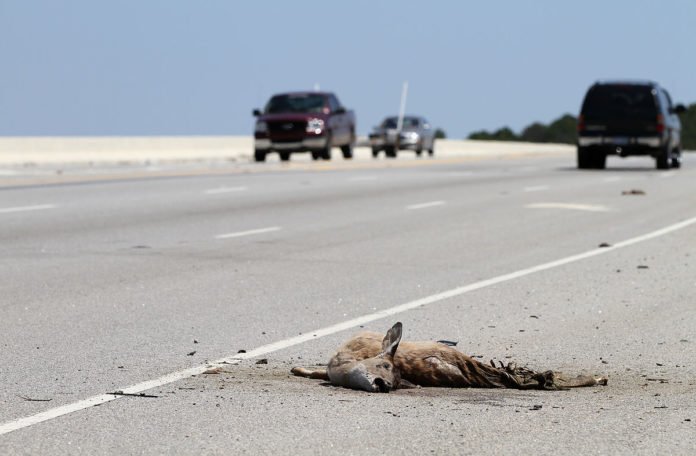There are millions of wildlife deaths on British roads every year. the subsequent remains speak to a significant measure of nourishment for scroungers. By expelling roadkill in urban regions, scroungers play out a significant environmental benefit, however, the fast expulsion of these remains by foragers could lead scientists to underestimate the effect of streets on wildlife.
According to an estimate presented by the Oxford University Press, that the number of wild animals killed by road vehicles might be significantly higher than usually detailed or comprehended. The study suggests that the roads negatively affects wildlife such as changing and fragmenting animal habitats.
Scientists examined which species scrounge on roadkill in urban areas, the likelihood of roadkill being removed by scroungers and whether spatial and temporal factors (such as location and time of day) influenced the rate of removal. For this, they conveyed camera traps goaded with chicken heads to reproduce roadkill carcasses in six private and six parkland locales in the city of Cardiff.
They found that the seven species removing the roadkill, with corvids (members of the crow family) being the most common scavengers, responsible for 42% of removals. Of the 120 carcasses, 90 (76%) were evacuated inside 12 hours. Those seven species includes- two species of gull, carrion crow, Eurasian magpie, red fox, domestic dog, and a domestic cat. Time of day significantly affected the rate of evacuation, with the quantity of remains expulsions topping in an initial couple of hours of light. Of roadkill put at 9 AM, 62% of corpses had been expelled after just two hours.
It suggests, the actual number of road deaths is six times more than that observed during surveys. Corvids were the most common scavengers, responsible for 42% of roadkill removals. In addition to the observed removals, mice, likely wood mice, and a brown rat were observed scavenging on the bait but did not remove it.
Of the watched scroungers, winged creatures searched most much of the time, with 51 rates of roadkill expulsion, contrasted with 28 by mammals. There was a critical distinction amongst private and parkland living spaces in the relative frequencies of the diverse taxa rummaging the baits, demonstrating that the probability of a specific creature searching the trap was reliant on the sort of environment.
The paper’s lead author, Amy Williams Schwartz said, “Removal of animals by scavengers is believed to be the most important factor causing underestimations of roadkill numbers, particularly of small animals such as garden birds and rodents. Our study demonstrates the frequency and speed at which scavengers can remove roadkill, and the extent to which we could underestimate the true number of casualties, but also suggests that many urban scavengers such as crows, gulls, and foxes could be providing an under-appreciated and largely unnoticed carcass removal service in our cities.”
The study is published online in the Journal of Urban Ecology.
